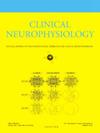基于人工智能的脑电图分析:新技术及临床应用路径。
IF 3.6
3区 医学
Q1 CLINICAL NEUROLOGY
引用次数: 0
摘要
这篇综述文章介绍了在临床实践中使用人工智能(AI)和机器学习(ML)模型分析人类脑电图(EEG)的挑战和潜在好处。将基于人工智能的工具集成到临床工作流程中有可能提供新的见解,提高效率并从根本上改善结果,但在开发、验证、集成和解释这些工具的过程中必须小心,以确保它们的可行性和有效性,以免我们冒着引入复杂性和潜在有害误解的风险。本综述的主要目的是向非技术受众介绍基于人工智能的临床工具的关键概念,并提出成功整合这些工具的标准。根据作者35年来满足新技术医疗器械监管要求的集体经验,以及对当前文献的广泛抽样,本综述提供了对基于人工智能的工具在临床实践中的挑战和机遇的见解。分析是推广到基于人工智能的软件,但脑电图测量的关键例子和应用在临床神经病学治疗癫痫和其他疾病。作者认为,虽然数字技术有可能彻底改变临床实践,特别是在癫痫患者的监测方面,但它也引发了与数字不平等、自动化偏见和基本表现相关的问题。这篇综述的含义指出,需要更加透明的开发和临床整合,从根本上基于技术创新者和临床从业者之间的合作,以允许安全有效地采用新技术,并最大限度地获得临床成功。本文章由计算机程序翻译,如有差异,请以英文原文为准。
AI-based EEG analysis: new technology and the path to clinical adoption
This review article introduces the challenges and potential benefits of the use of Artificial Intelligence (AI) and Machine Learning (ML) models in the analysis of the human electroencephalogram (EEG) in clinical practice. The integration of AI-based tools into clinical workflow has the potential to offer new insights, increase efficiency and essentially improve outcomes, but care must be taken during the development, validation, integration and interpretation of such tools to ensure their viability and efficacy, lest we risk introducing complexity and potentially harmful misinterpretations. The primary objective of this review is to introduce the key concepts of AI-based clinical tools to a non-technical audience, and to present the criteria for successful integration of such tools.
Drawing from the authors’ collective 35-year experience meeting medical device regulatory requirements for new technology, as well as a broad sampling of the current literature, this review offers insights into the challenges and opportunities of AI-based tools in clinical practice. The analysis is generalized to AI-based software, but key examples of EEG measurement and usage in clinical neurology in the treatment of epilepsy and other disorders are presented. The authors suggest that while digital technology has the potential to revolutionize clinical practice, specifically in the monitoring of epileptic patients, it also raises issues related to digital inequality, automation bias and basic performance. The implications of this review point to the need for more transparent development and clinical integration, based fundamentally on the collaboration between technology innovators and clinical practitioners, to allow safe and effective adoption of new technologies with the maximum likelihood of clinical success.
求助全文
通过发布文献求助,成功后即可免费获取论文全文。
去求助
来源期刊

Clinical Neurophysiology
医学-临床神经学
CiteScore
8.70
自引率
6.40%
发文量
932
审稿时长
59 days
期刊介绍:
As of January 1999, The journal Electroencephalography and Clinical Neurophysiology, and its two sections Electromyography and Motor Control and Evoked Potentials have amalgamated to become this journal - Clinical Neurophysiology.
Clinical Neurophysiology is the official journal of the International Federation of Clinical Neurophysiology, the Brazilian Society of Clinical Neurophysiology, the Czech Society of Clinical Neurophysiology, the Italian Clinical Neurophysiology Society and the International Society of Intraoperative Neurophysiology.The journal is dedicated to fostering research and disseminating information on all aspects of both normal and abnormal functioning of the nervous system. The key aim of the publication is to disseminate scholarly reports on the pathophysiology underlying diseases of the central and peripheral nervous system of human patients. Clinical trials that use neurophysiological measures to document change are encouraged, as are manuscripts reporting data on integrated neuroimaging of central nervous function including, but not limited to, functional MRI, MEG, EEG, PET and other neuroimaging modalities.
 求助内容:
求助内容: 应助结果提醒方式:
应助结果提醒方式:


